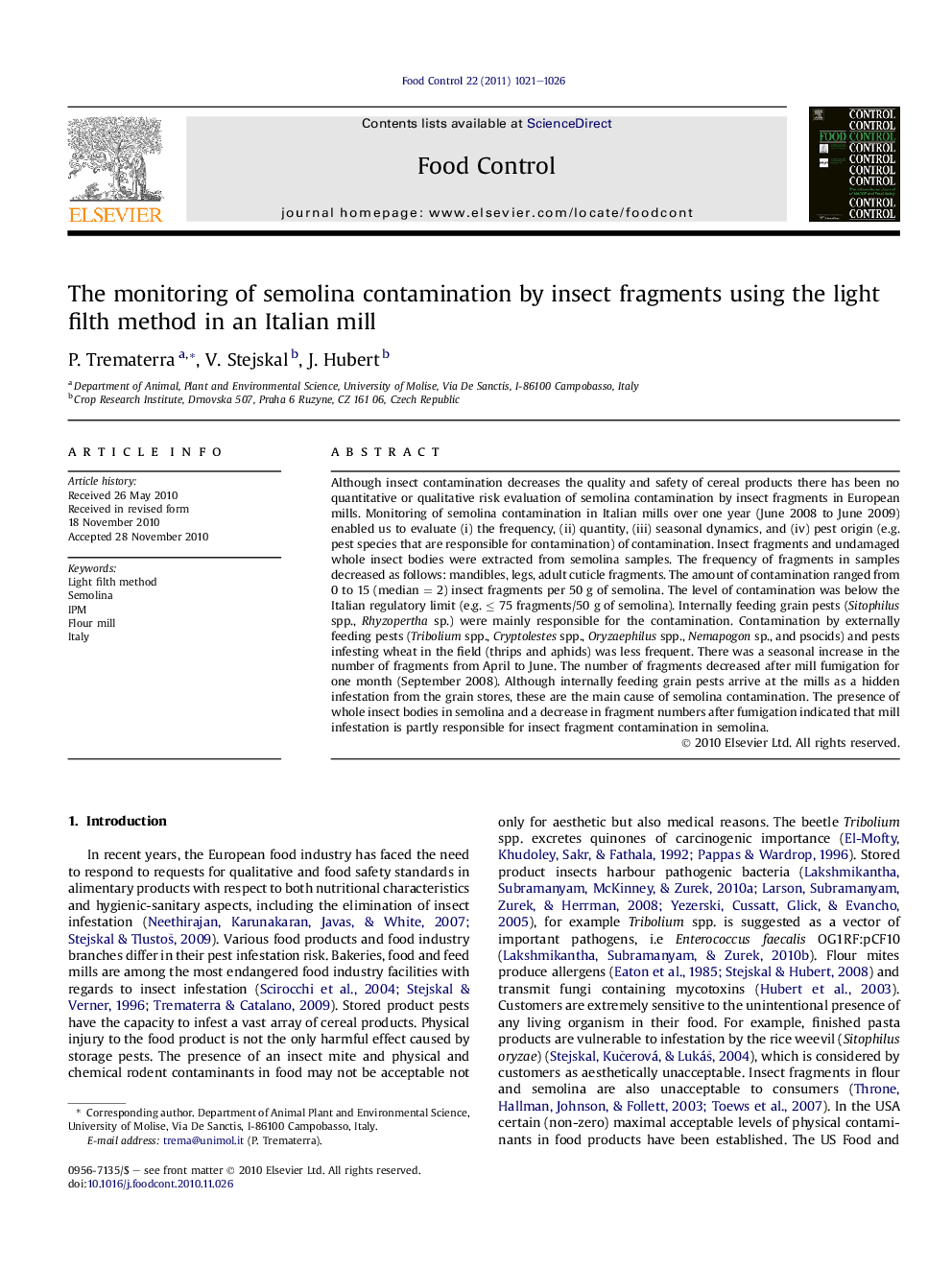| کد مقاله | کد نشریه | سال انتشار | مقاله انگلیسی | نسخه تمام متن |
|---|---|---|---|---|
| 4559712 | 1330471 | 2011 | 6 صفحه PDF | دانلود رایگان |

Although insect contamination decreases the quality and safety of cereal products there has been no quantitative or qualitative risk evaluation of semolina contamination by insect fragments in European mills. Monitoring of semolina contamination in Italian mills over one year (June 2008 to June 2009) enabled us to evaluate (i) the frequency, (ii) quantity, (iii) seasonal dynamics, and (iv) pest origin (e.g. pest species that are responsible for contamination) of contamination. Insect fragments and undamaged whole insect bodies were extracted from semolina samples. The frequency of fragments in samples decreased as follows: mandibles, legs, adult cuticle fragments. The amount of contamination ranged from 0 to 15 (median = 2) insect fragments per 50 g of semolina. The level of contamination was below the Italian regulatory limit (e.g. ≤ 75 fragments/50 g of semolina). Internally feeding grain pests (Sitophilus spp., Rhyzopertha sp.) were mainly responsible for the contamination. Contamination by externally feeding pests (Tribolium spp., Cryptolestes spp., Oryzaephilus spp., Nemapogon sp., and psocids) and pests infesting wheat in the field (thrips and aphids) was less frequent. There was a seasonal increase in the number of fragments from April to June. The number of fragments decreased after mill fumigation for one month (September 2008). Although internally feeding grain pests arrive at the mills as a hidden infestation from the grain stores, these are the main cause of semolina contamination. The presence of whole insect bodies in semolina and a decrease in fragment numbers after fumigation indicated that mill infestation is partly responsible for insect fragment contamination in semolina.
Journal: Food Control - Volume 22, Issue 7, July 2011, Pages 1021–1026